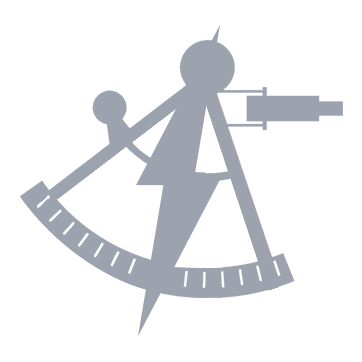Summary
Commander John C. “Jack” Conrad Jr. is a Starfleet officer in the late 23rd century, in command of the Oberth-class U.S.S. Phoenix/NCC-618 following a distinguished career as a helm and navigation officer and Starfleet Academy instructor. One of the defining moments of his career came during a rotation on the U.S.S. Lexington/NCC-1709 in which the ship fell under attack by the U.S.S. Enterprise/NCC-1701 under the control of the M-5 computer.
History
John C. “Jack” Conrad Jr. was born in 2239 on Benecia Colony in an agricultural community that supported the rest of the colony. His parents were veterinarians who traveled around the community tending to horses, cows, goats and other farm animals. Jack found he didn’t have the same enthusiasm (or the stomach) for that profession that his older sister, Jennifer, did, but when he would go around with his mother or father to the colony’s central district, he was intrigued by the freighters and transports he saw landing or taking off from the colony spaceport. On one such trip, when Jack was 8, he wandered off from his mother and into a commissary for visiting Starfleet personnel. Colony life was fairly homogenous and thus far, apart from the animals his parents treated, young Jack had not encountered many nonhumans.
The commissary, however, was loaded with them. He saw Vulcans, Andorians, Saurians, Rigellians, Zaranites, Denobulans socializing side by side with humans. An older Tiburonian lieutenant commander named Nestor Kobil saw Jack, and immediately recognized that the child must be lost. He took Jack to find his mother and in the ten minutes it took to track her down (she was gracious with Nestor but furious with Jack), Jack had gotten the Tiburonian’s life story in Starfleet — where he’d been, the ships he’d served on, the new people he’d met.
Nestor also talked about Starfleet Academy, which set Jack on a new course. As he got older, his parents pushed back against his desire to go to space. They wanted a life of stability for him. They would support him going to university (even offworld if he wanted), but vehemently stood firm against him applying for Starfleet Academy.
Even though Jennifer was following in her parents’ footsteps, she sympathized with her younger brother’s plight. She helped him make contact with someone in the central district who could help him with his application and not let his parents find out. In her research, she discovered something that perhaps explained why his parents were so opposed to a Starfleet career for Jack. It had been common family knowledge that the Conrads left Earth in the 22nd century, working in the Earth Cargo Service. Many of them settled on Benecia. It was even well known in the family history that distant ancestor Charles “Pete” Conrad Jr. was among the first human beings to walk on Earth’s moon in the late 20th century. Jennifer, however, discovered that some of the family remained on Earth in the 22nd century, and that one of them, Sally Christine Conrad, was in the first graduating class of United Earth’s Starfleet Academy, before the Coalition of Planets and before the founding of the Federation. She served with distinction as a helm officer on the UESPA spacecraft Columbia/NX-02, attaining the rank of lieutenant before perishing with all hands in 2156, defending against a Romulan surprise attack on Starbase 1, which was being constructed on an uninhabited planetoid orbiting the red dwarf star Algeron. As such, Sally Conrad was among the first casualties of the Earth-Romulan War.
After learning that bit of family history, Jack could start to understand his parents’ reluctance to see him living and working in space. The United Federation of Planets and the Klingon Empire were in the most frigid part of a decades long cold war, and, from their point of view, their son was willingly putting himself in harm’s way. It did not dissuade him, though, and he submitted his application through Jennifer’s contact in the central district.
Jack was ecstatic when he found he’d been selected and gleefully accepted his orders to report to the San Francisco campus starting next term. His plan, however, was not watertight. The local news publication published an academy press release announcing Jack’s appointment, which was how his parents learned of their son’s deception. His father tossed him out of the house. Jack lived that summer on the couches of friends, counting down the days until he would catch a transport for Earth. Home on her own summer break from university, Jennifer secretly collected a few items from Jack’s bedroom in his parents’ home and gave them to Jack to take with him to Earth.
After arrival on campus in 2257, Jack was assigned to Yeagher Squadron and, by contrast to his chaotic summer on Benecia, life on campus was rigid. Nothing he had read or heard about Starfleet Academy could have prepared him for the daily grind of being a cadet, and especially a plebe. The physical training was grueling. The upperclassmen yelling at him on the parade grounds was soul crushing. Having not a minute to himself from sunup to sundown was an exercise in personal discipline. It took Jack about a month to decide he wasn’t going to run away. About that time he met Ned Hennessy, a fellow cadet double majoring in computer science and engineering. Like Jack, Ned grew up on a colony world in an agricultural community, but the similarities ended there. Where Jack was merely smart enough to get into the academy, Ned was brilliant. He was also odd, being one of the only cadets to wear spectacles. He had a gangly way of walking too, not the confident strut of most cadets who visioned themselves among the great starship captains. They helped each other out with their courses, and as the friendship grew, so did Jack’s confidence in his place at the academy.
To his own surprise, Jack excelled in his flight and astronavigation courses, and when he finally got behind the stick of an academy flight trainer, it felt like something he was born to do. As his cadet career advanced, he grew even more self-assured as a future officer and pilot. His second year he was invited to join the Yeagher Squadron flight team. On the Starfleet Academy Saturn Flight Range, he began setting minor records flying the course. So, too, was another cadet, Ana Lucia Morales from Nova Squadron. It was not long before a fierce rivalry was born: sarcastic barbs, trash talk in the mess, passive aggressive remarks during flight instruction. There had always been a friendly spirit of competition among all the academy squadrons, but the battle between Conrad and Morales had an added element of tension. It came to a head one day on the flight range while Yeagher and Nova squadrons were practicing routine maneuvers. Conrad and Morales, now fourth-year cadets, decided to turn it into a race, nearly killing themselves and some of their classmates in the process. Their antics drew the ire of the range officer, who didn’t even wait for the two of them to get out of their spacesuits before dressing them down on the hangar deck in front of all the other cadets.
Graduation came and went. Jack was commissioned as an ensign in 2261 and immediately sent to his first assignment as a relief helmsman/navigator on the Capella-class surveyor U.S.S. Mercury/NCC-713. It was a small ship of 60 enlisted personnel and 20 officers, and Jack was at the bottom of the rung among the officers, drawing additional duties that the higher ranking officers didn’t want to do. Even so, he loved the assignment as piloting a surveyor required more skill than the larger ships of the line. He also volunteered for shuttle flight duty whenever it came up. An academy instructor once told him that more time behind the flight controls, especially voluntary, would translate to better assignments as his career progressed.
A better assignment didcome a year later when Jack transferred to the Surya-class U.S.S. Endurance/NCC-1862, again as a relief helmsman/navigator, as well as Captain Samuel Maddox’s favorite shuttle pilot. Jack learned much from Maddox about carving out a prosperous career as a Starfleet officer. After Jack transferred off the Endurance after a year, he discovered that Maddox had given him a going away present, putting him in for a promotion.
Newly minted Lieutenant (j.g.) Conrad reported aboard the Loknar-class U.S.S. Aldebaran/NCC-1653, followed by the Hermes-class U.S.S. Revere/NCC-595. Aboard the Aldebaran, Jack had the helm during several engagements with Orion pirates and various smuggling operations while the ship helped keep the shipping lanes safe for commercial traffic. Distinguished duty aboard those vessels earned him commendations and another promotion. Jack felt his star was on the rise, and something great was waiting for him.
And he was right. When he found out in 2265 he’d been assigned to the Constitution-class U.S.S. Lexington, he was ecstatic. Though he still was not speaking to his parents, he often wrote his sister, who was now practicing veterinary medicine on Alpha Centauri (caring mostly for domestic animals), updating her on his travels and his career. He also heard through fleet scuttlebutt that he was one of only a handful of flight cadets from his academy class to be assigned as chief helmsman of one of the coveted Constitution-class starships. He felt poised for greatness.
The Lexington was a choice assignment. In addition to putting Jack on a high-profile starship, the transfer reunited him with academy friend Ned Hennessy, who had chosen to follow the computer sciences discipline, putting a career in engineering on hold. Jack found himself spending more time on the bridge, attending senior officer meetings and even getting assigned to landing parties. The ship’s commanding officer, Commodore Robert Wesley, believed in developing his lieutenants into command material, so he assigned Jack to command the astrocartography division for a month. It had been a valuable experience for the young lieutenant, until a fateful day when the Lexington, along with three other starships, participated in war games with the U.S.S. Enterprise/NCC-1701. The Enterprise was being controlled by Richard Daystrom’s next generation supercomputer, the M-5. The computer, however, saw the war game fleet as a real threat, and began firing full-strength phasers at the unshielded starships. Jack faced his first command decision, nearly resulting in the loss of a handful of personnel under his command. He received a commendation from Wesley, but the incident left him questioning his ability to make command decisions.
In order to clear his head, Jack felt he needed to get his feet back on terra firma for a while. He requested a transfer to Starfleet Academy in 2267, where he taught flight dynamics and astrophysics, bringing his deep space experience back to campus to impart to younger minds. To his surprise, his one-time rival, Ana Lucia Morales, now a lieutenant commander, was teaching there as well. At first the chill of the rivalry resurfaced, but as the grew as colleagues, they started spending more time together, talking about where they’d been and what they’d seen. Jack told Ana Lucia about the M-5 incident. Ana Lucia told him about saving the U.S.S. Durmitov/NCC-1853 from falling through the atmosphere of Werner IV. They laughed about their immature antics as cadets, realizing they had more in common that they never bothered to learn. Soon, they began dating, and as the news filtered through their graduating class, they received subspace messages ranging from “I’m shocked!” to “I always knew it.”
At the end of the year, Jack learned about a chief helm officer opening on the Constitution-class U.S.S. Yorktown/NCC-1717. He and Ana Lucia committed to keep dating, even while he was on assignment. It was difficult, but they wrote each other often. Soon, though, the frequency of the letters slowed down, and they decided to take a break from the relationship. The end of his romance was a blow to Jack, but he managed to absorb himself in work, taking on even more command duties. The ship was tasked with exploring the Ba’ahan Expanse, where Jack plotted survey patterns through new star systems, cataloging anomalies and other phenomena. Toward the end of his three years on the ship, he applied for and was accepted to the academy’s Command Training Program in 2271. With it came a promotion to lieutenant commander.
He had hoped to reunite with Ana Lucia at the academy, but in the three years since he left for the Yorktown she had attended command school and resumed her deep space career with a first officer posting. In contrast to those first difficult months as a cadet 14 years ago, he felt at ease in command school. Commodore Wesley had said he would. He wrote to Wesley, now an admiral, to thank him for putting him on the path to command, even with all its bumps in the road. Jack handled the bridge simulations “in a clear-headed manner” according to his evaluations, though he has never told anyone how he performed on the notorious Kobayashi Maru no-win scenario.
Now certified for command in space, Lieutenant Commander Conrad reported aboard the Miranda-class starship U.S.S. Demeter/NCC-1863 in 2273. He resumed writing to Ana Lucia to re-stablish at least a friendship. She was excited to hear about his assignment, telling him about her own assignment. For a while, Jack felt bad about the breakup, and the renewed friendship helped unburden him of that. The missions undertaken by the Demeter were important expeditions, expanding the bounds of explored space. Jack helped his commanding officer, Captain T’Nev, negotiate three first contacts and many survey missions. She entrusted him with commanding several landing parties. At the end of his fourth year, T’Nev informed Jack of a commanding officer position on a brand new Oberth-class scout, the U.S.S. Phoenix/NCC-618. With her encouragement, he applied for the posting and received it, taking command in 2277.
The day before he was scheduled to ship out with his new command, Jack visited the Cochrane First Contact Memorial at Bozeman, Montana in North America. There, he made his first sojourn into The Tavern, a frequent watering hole for brand new starship commanders. While enjoying a few glasses of Aldebaran whiskey (on the rocks), he unloaded some of his fears about command, stemming from the M-5 incident of 2267, on the establishment’s proprietor, a genial fellow named Cap.
Service Record
| Date | Position | Posting | Rank |
|---|---|---|---|
| 2257 - 2258 | Starfleet cadet | Starfleet Academy - San Francisco |
 Freshman Cadet Freshman Cadet |
| 2258 - 2259 | Starfleet cadet | Starfleet Academy - San Francisco |
 Sophomore Cadet Sophomore Cadet |
| 2259 - 2260 | Starfleet cadet | Starfleet Academy - San Francisco |
 Junior Cadet Junior Cadet |
| 2260 - 2261 | Starfleet cadet | Starfleet Academy - San Francisco |
 Senior Cadet Senior Cadet |
| 2261 - 2262 | Relief helm officer/navigator | U.S.S. Mercury/NCC-713 |
 Ensign Ensign |
| 2262 - 2263 | Relief helm officer/navigator | U.S.S. Endurance/NCC-1862 |
 Lieutenant Junior Grade Lieutenant Junior Grade |
| 2263 - 2264 | Relief helm officer/navigator | U.S.S. Aldebaran/NCC-1653 |
 Lieutenant Junior Grade Lieutenant Junior Grade |
| 2264 - 2265 | Relief helm officer/navigator | U.S.S. Revere/NCC-595 |
 Lieutenant Junior Grade Lieutenant Junior Grade |
| 2265 - 2267 | Chief helm officer | U.S.S. Lexington/NCC-1709 |
 Lieutenant Lieutenant |
| 2267 - 2268 | Instructor - Flight Dynamics and Astronautics | Starfleet Academy - San Francisco |
 Lieutenant Lieutenant |
| 2268 - 2274 | Chief helm officer | U.S.S. Yorktown/NCC-1717 |
 Lieutenant Lieutenant |
| 2274 - 2276 | Command officer candidate | Starfleet Academy Command Training Program - San Francisco |
 Lieutenant Commander Lieutenant Commander |
| 2276 - 2286 | First officer/chief helm officer | U.S.S. Demeter/NCC-1863 |
 Lieutenant Commander Lieutenant Commander |
| 2286 - 2288 | Aerospace engineer/flight dynamics | ASDB - Meridian Station Fleet Yards |
 Commander Commander |
| 2288 - Present | Commanding officer | U.S.S. Phoenix/NCC-618 |
 Commander Commander |

 Bravo Fleet
Bravo Fleet






